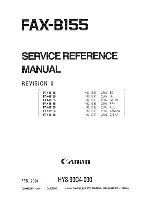
60
DECORATIVE SEWING
Presser foot: Satin Foot
Different types of decorative stitches are available.
The following are examples of how to use and sew these stitches.
You can use other stitches in the same way.
<RXVKRXOGFDUU\RXWDWHVWVHZLQJRQDVFUDSSLHFHRIWKH
fabric being sewn, to check the stitch pattern to be used.
%HIRUH VWDUWLQJ WR VHZ FKHFN WKDW WKHUH LV HQRXJK WKUHDG
wound onto the bobbin to make sure that the thread will not
run out during sewing.
6OLJKWO\ORRVHQWRSWKUHDGWHQVLRQ
)RUEHVWUHVXOWVXVHDVWDELOL]HUWKDWLVDSSURSULDWHIRUWKH
particular fabric that you are working with. For example,
place a piece of tear-away stabilizer underneath the
stitching area when working with a cotton fabric. (See page
72-75 for more help with stabilizer selection).
TIPS ON DESIGN STITCHING
Scallop Stitch (45)
This is an ideal decorative stitch for finishing the edges of
fabrics, such as those used for table linens or children’s
FORWKLQJ :KHQ VHZLQJ WKLV VWLWFK RQ D IDEULF HGJH ¿UVW VHZ
the stitch with a stabilizer underneath the fabric. Trim the edge
of the fabric along the edge of the stitch, being careful not to
cut into the stitching.
Pyramid (46)
This stitch can be used for embellishing bias binding or
creating decorative borders on garments and home dec
projects.
Arrowhead (47)
In addition to using this pattern as a decorative stitch, it can
also be used as a triangular backtack stitch for reinforcing
places which can easily unravel. This is particularly useful for
sewing both edges of pockets..
Checker Board Zigzag (48) and Checker Double (51)
Use a bias tape and fold back the edge. Sew the checker
stitch on top of this.
Diamond (50)
Fold over the edge of the fabric and use this stitch to tidy up
the edge.
Scallop stitches and diamond stitches can be combined to
create other attractive patterns.
















































